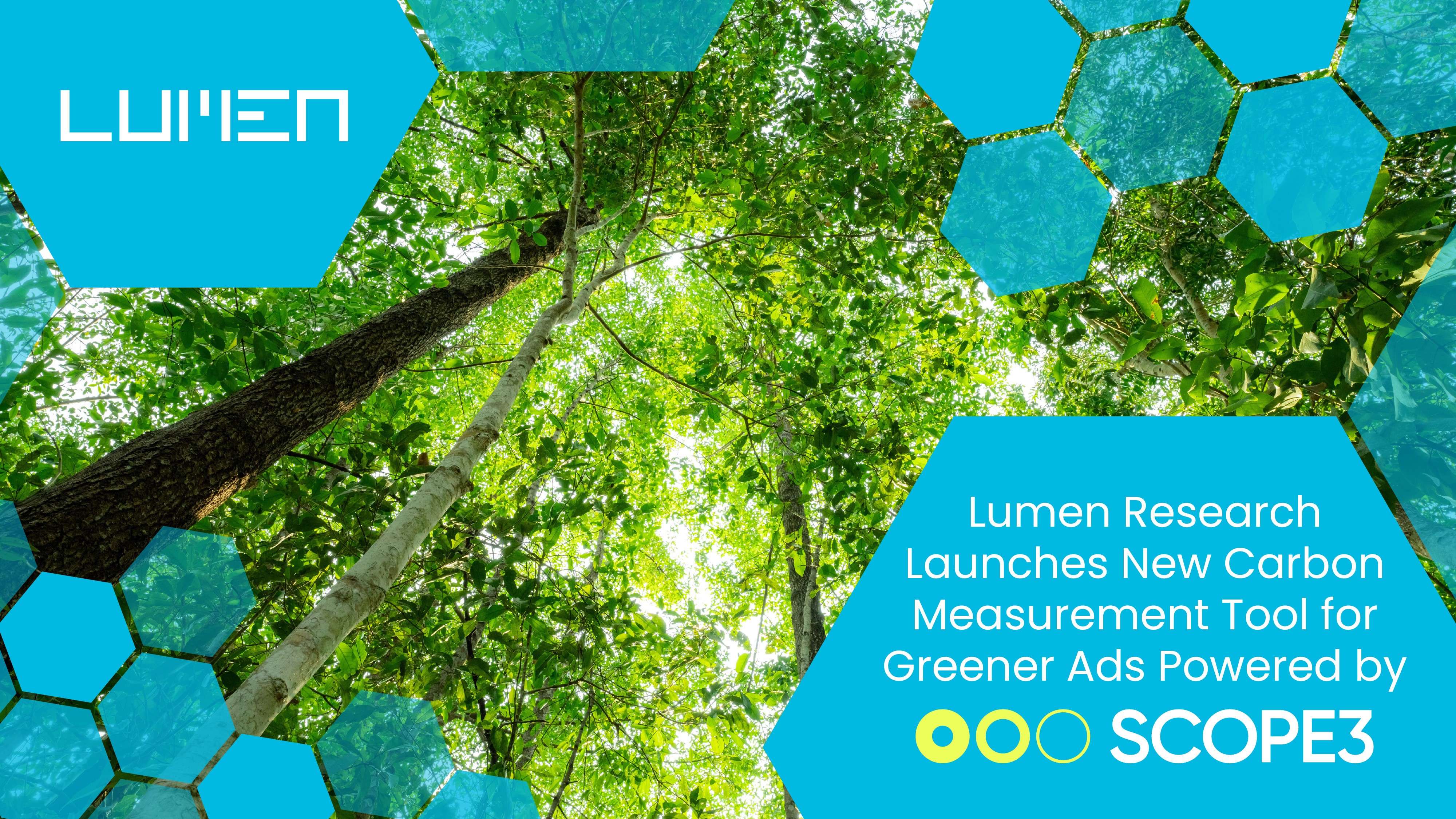Modern Metrics: Lumen Dashboard Pairs Carbon Cost With Attention
Deal with Scope3 provides emission measurement for clients interested in the environment

Lumen Research, already providing clients with data about the attention their ads generate, is adding a new carbon measurement tool to its dashboard in a partnership with Scope3.
Now clients will be able to judge in real time whether their ads are efficient in terms of both reaching consumers and in their use of energy, an increasingly important mandate to many companies prioritizing sustainability with zero-net-carbon footprint goals..
“By integrating Scope3’s carbon emissions technology with the Lumen Attention Measurement Platform, we are enabling advertisers to better understand how to make climate-friendly and business-friendly decisions,” says Mike Follett, CEO of Lumen Research. “We’re hoping that this is the first step in a journey to make a low carbon, high attention, high impact internet.”
Both attention and sustainability have been hot topics in the advertising business. Putting them both together comes down to creating different incentives for advertisers, said Blaise Lucey, global marketing director at Lumen

The two metrics are related in terms of eliminating waste. Advertisers can avoid wasting media dollars by shifting from older viewability standards to attention, which according to Lumen’s studies more closely correlates to return on investment.
The carbon data also tends to favor providers of ads that are actually seen by consumers, generating attention, rather than those that publish many ads that are technically viewable but don’t generate actual impact.
“The bottom line is there are a lot of websites just running ads that no one is actually looking at, so it’s just a waste overall for ad budgets, but also for the environment,” Lucey said.
Broadcasting & Cable Newsletter
The smarter way to stay on top of broadcasting and cable industry. Sign up below
Clutter tends to lower scores for both attention and sustainability. “The more ads there are on the screen, the less attention and the higher emissions per attentive second,” Lucey said. Certain ad vendors also have clunky technology that isn’t efficient in terms of how often its refreshes and its ability to connect with demand side platforms.
“These websites are driving higher carbon emissions because they're just full of ads we know no one sees,” he said. the ads and no one visits the website
Lumen is interested in delivering what Lucey called mission-driven advertising. “We’re creating a new set of incentives that will create a healthier digital ecosystem.”
Several media buyers have made sustainability a criterion they use when buying for clients interested reducing their carbon footprint. One working with Lumin is Havas Media group.
“Havas Media Group is committed to earning people’s attention and building meaningful connections with brands. Our proprietary data has demonstrated that better quality, high-attention media delivers better results for brands, and we are consistently working with partners to create metrics that can accurately assess the attention and quality of each media placement,” said Jon Waite, Global Managing Director, Mx Development, Havas Media Group.
“As stewards of our clients’ brands, we have a responsibility to deliver a holistic view of the impact of their marketing activities. The integration of Scope3’s carbon emissions dataset into the Lumen Attention Measurement Dashboard demonstrates the connection between attention and sustainability and allows us to optimize for media placements that deliver for brands, people, and the planet,” Waite said.
Lumen Is among the companies looking at attention as a key metric for measuring media. Lucey said attention could serve as a way to measure not just linear and streaming video, but for measuring across all media times.
“The ultimate goal would be to create a single attention per impression cost. When you’re comparing something like Pneterest to Instagram to display to linear, you should have one metric that would say this is how much attention costs for each each of these impressions,” he said.
Integral Ad Science has incorporated Lumen’s predictive eye-tracking data into its attention model.
“We can predict with a high degree of accuracy if an ad will be seen,” Lucy said. Those findings were recently validated in a study by PwC. “They found that if you optimize for attention instead of viewability, you drive higher engagement and conversions.”
Lumen is also working with Amazon on attention metrics, starting with Amazon’s Twitch platform.
“Attention is so applicable across channels. That's where it gets interesting, because you can now do new mediums,” Lucey said. “You can do streamers, in-game advertising. Just about anything on a screen can be essentially understood from an attention perspective.”
Jon has been business editor of Broadcasting+Cable since 2010. He focuses on revenue-generating activities, including advertising and distribution, as well as executive intrigue and merger and acquisition activity. Just about any story is fair game, if a dollar sign can make its way into the article. Before B+C, Jon covered the industry for TVWeek, Cable World, Electronic Media, Advertising Age and The New York Post. A native New Yorker, Jon is hiding in plain sight in the suburbs of Chicago.

